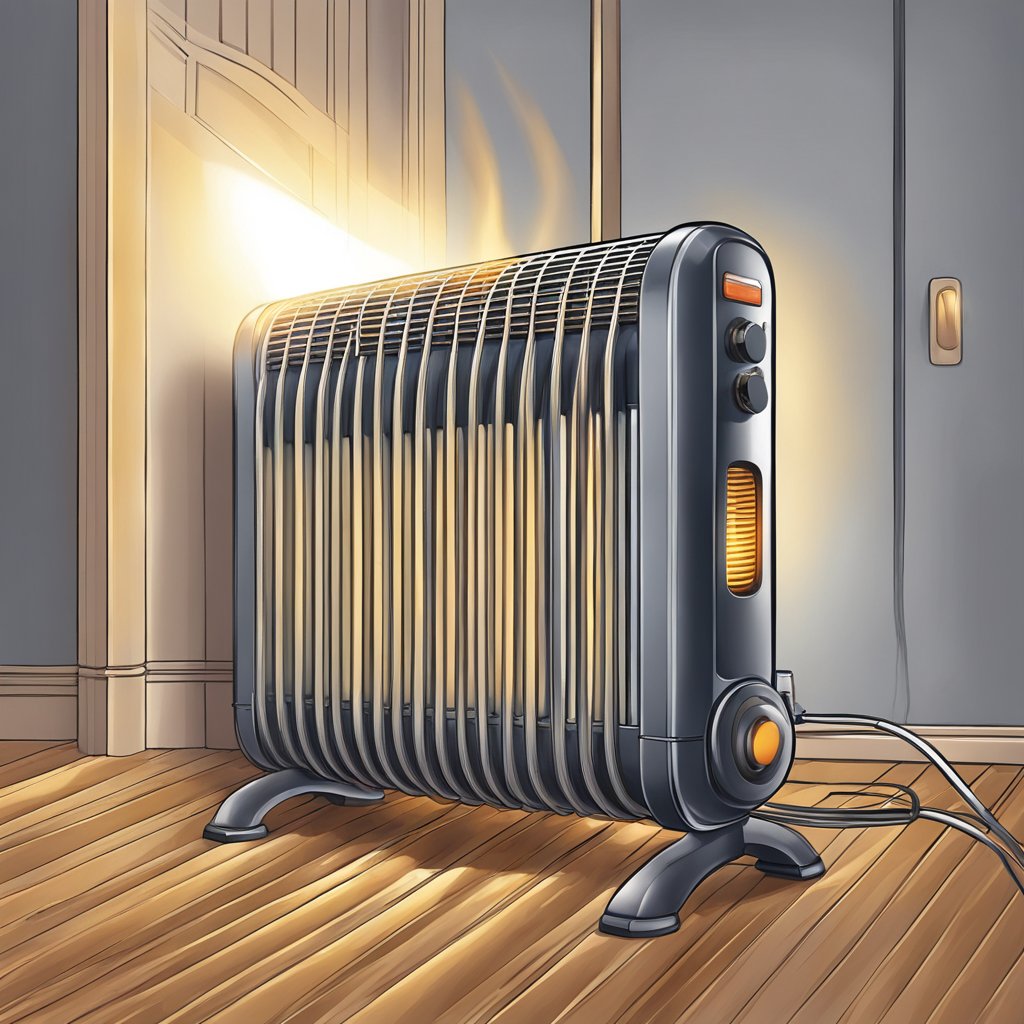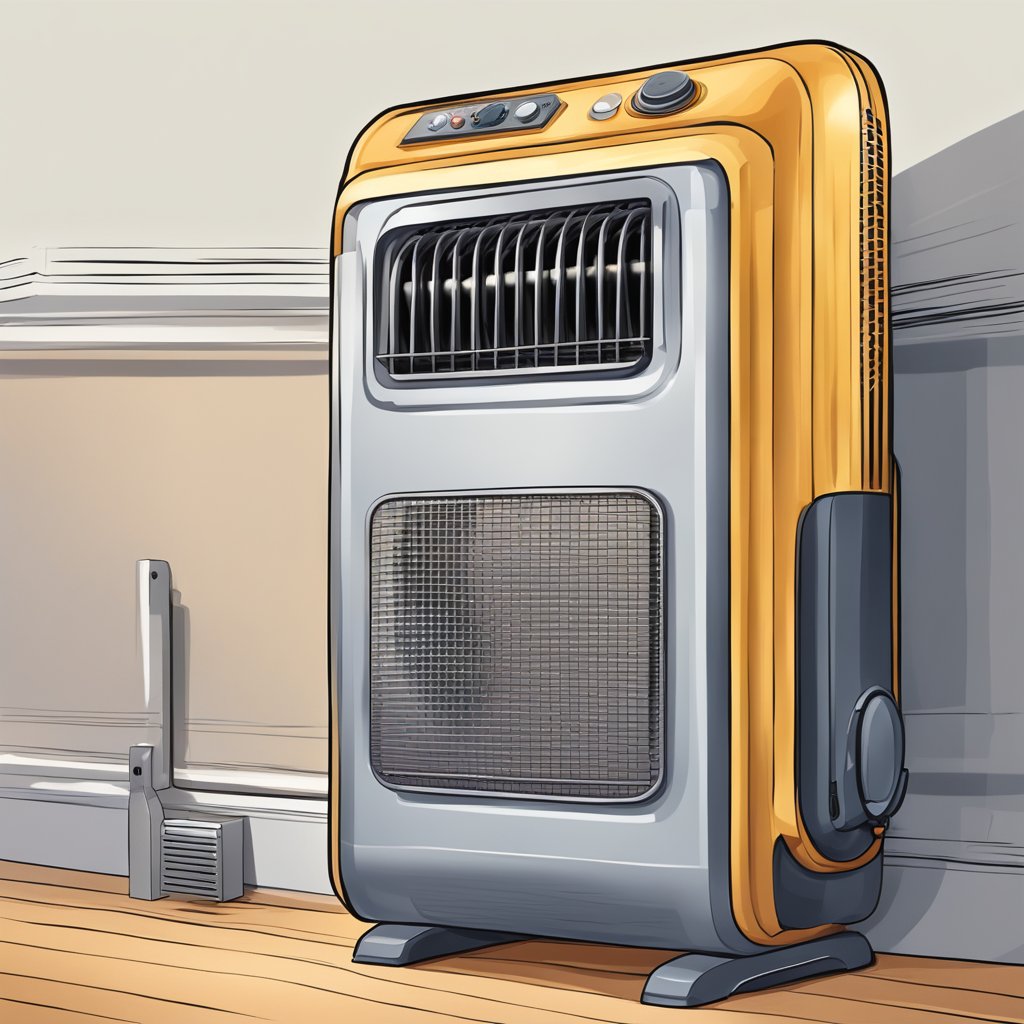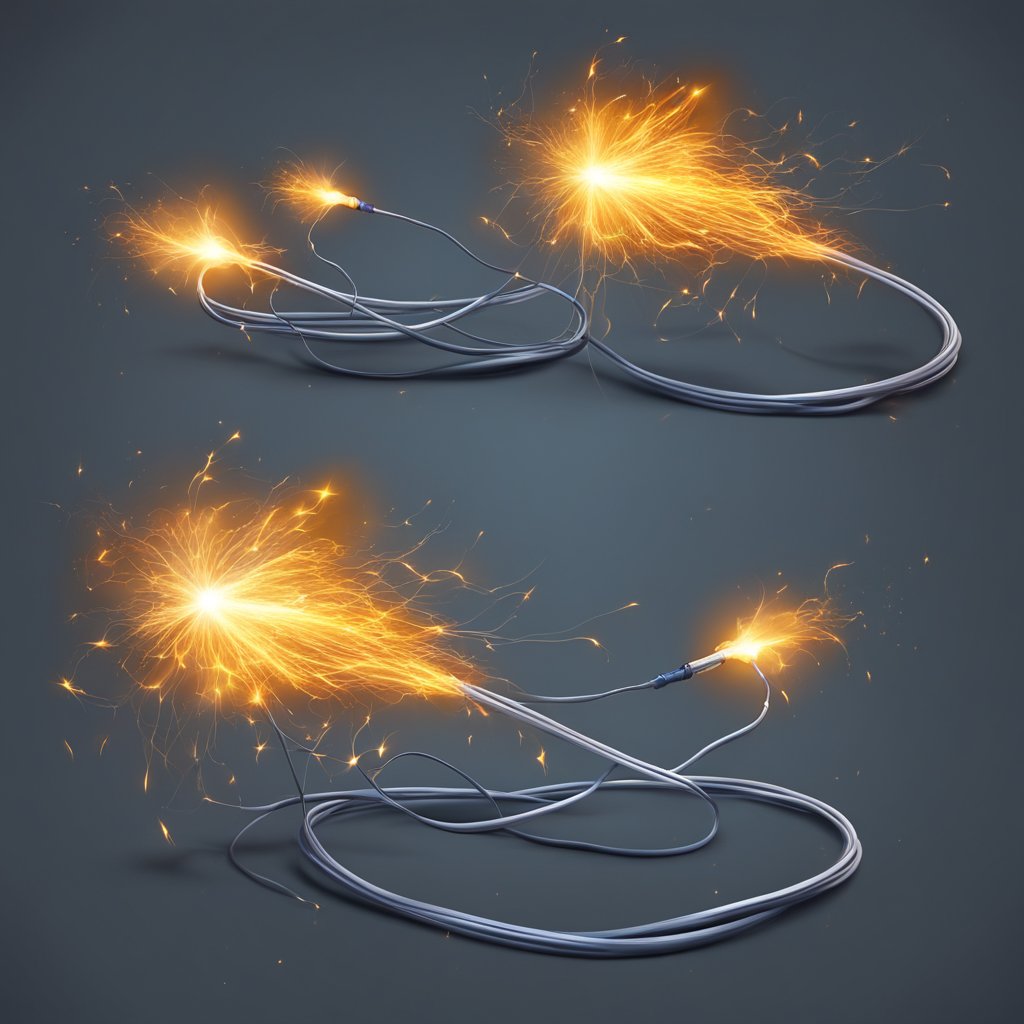Why Do My Lights Flicker or Dim When I Turn On My Space Heater?
Ever wondered why your lights dim or flicker when you power on your space heater?
This is not just an ordinary occurrence; it’s an indication of the complex relationship between high-power consuming appliances and your home’s electrical infrastructure. In this comprehensive guide, we’ll dive deep into why space heaters can lead to flickering or dimming lights, the science behind electrical loads, and the potential hazards you might be unwittingly exposing your home to.
Armed with statistics from leading organizations like the NFPA and EIA, this article will illuminate the intricate dance between space heaters, your home’s wiring, and the broader electrical grid.
By the end, you’ll have a better grasp on how to use your space heater safely, efficiently, and in harmony with your home’s electrical needs.
Why a Space Heater Can Make the Lights Flicker or Dim When Its Turned On
Space heaters, especially those designed to heat larger areas, are among the top power consumers in household appliances.
The National Fire Protection Association (NFPA) has pointed out that, despite space heaters being used in only 32% of U.S. homes, they account for 43% of home heating fires annually. A part of this risk comes from the significant electrical load they demand, and the strain this places on household electrical systems.

How Space Heaters Can Trigger Power Surges
An electrical surge, simply put, is a sudden and temporary increase in voltage within an electrical circuit. These surges can damage appliances or even cause fires if not appropriately managed.
Here’s the link between space heaters and electrical surges:
- Overloaded Circuits: When a space heater (often consuming 1,000 to 1,500 watts) is plugged into a circuit that is close to its capacity limit, the addition can push the circuit beyond its safe threshold. This can result in a surge as the system struggles to distribute power adequately.
- Aging Infrastructure: Many homes, especially those built before the 1980s, were not designed with the electrical demands of modern appliances in mind. The U.S. Energy Information Administration (EIA) states that as of 2020, 64% of U.S. homes were more than 40 years old. Adding a high-power device like a space heater to these older systems can easily lead to surges due to outdated wiring and electrical infrastructure.
- Inadequate Wiring: Even in newer homes, if the electrical wiring is not of the correct gauge or not appropriately insulated, the added demand of a space heater can cause overheating, leading to potential surges.

Protecting Your Home
Given the inherent risks, it’s crucial to use space heaters judiciously. Always plug them directly into wall outlets, avoiding extension cords, which can increase the risk of overloading. Furthermore, consider using surge protectors or investing in updated household wiring to handle modern electrical demands better. The Institute of Electrical and Electronics Engineers (IEEE) recommends regularly checking household electrical systems, especially if frequently using high-demand appliances like space heaters.
Diagnosing and Fixing the Lights Flickering or Dimming When a Space Heater Turns On
The flickering or dimming of lights when a space heater is activated is a clear sign of electrical disturbance. Understanding the potential causes, recognizing the symptoms, and taking actionable steps can help ensure the safety and efficiency of your electrical system.
Overloaded Circuit
Symptoms: Lights dim or flicker, not just in one room but throughout the house, especially when multiple high-wattage appliances are running simultaneously.
Actionable Steps:
- Identify the circuit to which your space heater is connected and ensure it’s not overloaded with other high-wattage devices.
- Use your space heater on a dedicated circuit or one with minimal other appliances connected.
- Consult with an electrician to possibly add more circuits to distribute the electrical load better.
Outdated Wiring
Symptoms: Older homes (40+ years) often exhibit signs of flickering lights, especially when modern appliances are plugged in.
Actionable Steps:
- Schedule an inspection with a licensed electrician to assess the condition of your wiring.
- If advised, upgrade the wiring, focusing first on high-demand areas like outlets for space heaters.
- Regularly inspect wiring for signs of wear or damage and replace as needed.

Loose Electrical Connection
Symptoms: Intermittent flickering lights, sometimes accompanied by a buzzing sound from an outlet or switch.
Actionable Steps:
- Turn off the power to the affected circuit at the circuit breaker.
- Inspect outlets, switches, and light fixtures for any loose connections. If unsure, seek professional help.
- Tighten connections or replace faulty components as necessary.
Faulty Space Heater
Symptoms: Lights dim or flicker only when a specific space heater is turned on, while other appliances do not cause such an issue.
Actionable Steps:
- Test the space heater on a different circuit to see if the problem persists.
- If the issue continues, consider repairing or replacing the space heater.
- Always check and follow manufacturer’s guidelines for operation and safety.
Voltage Fluctuations from the Utility Company
Symptoms: Random and inconsistent dimming or brightening of lights, not necessarily linked to space heater usage.
Actionable Steps:
- Contact your utility provider to report and inquire about the issue.
- Use voltage testers or monitoring devices to track fluctuations.
- Install a whole-house surge protector to shield your home from external electrical disturbances.
It’s important to remember that while some of these fixes can be done DIY, working with electrical systems always carries inherent risks. When in doubt, it’s best to consult with or hire a professional electrician to ensure safety and proper resolution.
What Makes Lights Flicker – Understanding Electrical Load
At its core, ‘electrical load’ refers to the total amount of electrical power being consumed by all devices connected to a specific circuit or system. Think of it like a weight scale; just as there’s a limit to how much weight the scale can measure accurately, there’s a limit to how much electrical power a circuit can handle without issues.
According to the U.S. Department of Energy, the average American household has an electrical service of 100-200 amperes, which means they can handle a total load of roughly 24,000 to 48,000 watts at any given moment, considering a voltage of 240 volts. However, not all of this capacity is available for use, as some of it is reserved for fixed appliances like water heaters or HVAC systems.

Appliances and Their Contribution to Load
Household appliances vary significantly in how much electrical load they contribute. Let’s look at heaters, for instance:
- Space Heaters: A common space heater can use between 500 to 1,500 watts. Thus, if you turn on a 1,500-watt space heater, it’s using 1.5 kilowatts of your home’s capacity. The Consumer Product Safety Commission (CPSC) mentions that space heaters are among the top electrical devices contributing to home electrical consumption during winter months.
- Central Heating Systems: On average, these systems consume around 3,500 watts (3.5 kilowatts) but can vary based on the efficiency and model. They contribute to a more substantial portion of the electrical load, especially in colder climates.
Other common household items and their approximate wattage, according to the Energy Use Calculator, include:
- Refrigerators: 100-800 watts
- Washing Machines: 500-5,000 watts (depending on the model and cycle)
- LED Light Bulbs: 8-12 watts per bulb
In essence, every device plugged in and turned on adds to the household’s electrical load. It’s crucial to be aware of this, especially when using devices that consume a significant amount of power, such as heaters, to avoid overloading circuits and the accompanying issues.
Potential Dangers of Ignoring Flickering or Dimming Lights with Your Space Heater
When lights flicker or dim upon the activation of a space heater, it’s more than just a minor annoyance. Ignoring these symptoms can lead to severe consequences, putting both the household and its occupants at risk. Understanding these dangers is vital for informed decision-making and prioritizing safety.
Electrical Fires
Symptoms: Persistent flickering, occasional smell of burning plastic, discolored or warm outlets, and buzzing sounds.
Potential Risks:
- Electrical fires are responsible for approximately 51,000 home fires each year in the U.S., resulting in nearly 500 deaths, 1,400 injuries, and $1.3 billion in property damage (source: Electrical Safety Foundation International).
- Overloaded circuits or faulty wiring can overheat, potentially igniting surrounding materials.
Actionable Steps:
- Regularly inspect outlets, switches, and wiring for signs of wear or damage.
- Use electrical appliances within their recommended limits.
- Seek professional inspection if symptoms persist.

Damage to Appliances and Electronics
Symptoms: Fluctuating power, unexpected appliance shutdowns, or frequent reset requirements.
Potential Risks:
- Voltage surges can damage sensitive electronics, resulting in costly repairs or replacements.
- Consistent under-voltage (brownouts) can reduce the lifespan of appliances.
Actionable Steps:
- Use surge protectors for sensitive electronics.
- Monitor power quality and consult with an electrician if fluctuations persist.
Reduced Efficiency and Higher Utility Bills
Symptoms: Space heater struggles to maintain temperature, runs continuously, or lights are dimmer than usual.
Potential Risks:
- Inefficient power draw can lead to increased energy consumption.
- Monthly utility bills might see a significant hike due to compromised electrical systems.
Actionable Steps:
- Periodically review energy bills for unexpected spikes.
- Consult with an electrician to assess and optimize your home’s electrical efficiency.
Electrocution Risks
Symptoms: Buzzing sounds, tingling sensation when touching an appliance, or visible sparks from outlets.
Potential Risks:
- Faulty wiring or appliances can pose a direct electrocution risk, which can be fatal.
- Every year, about 300 people in the U.S. die due to electrocution-related incidents (source: U.S. Consumer Product Safety Commission).
Actionable Steps:
- Avoid using appliances or outlets that show symptoms until they are inspected or repaired.
- Regularly educate household members about the dangers of electricity and the importance of safety.
Always prioritize safety over convenience. If you’re unsure about the state of your electrical system or the correct functioning of your space heater, it’s always best to seek professional advice and intervention. Ignorance might come at a hefty price, both financially and in terms of safety.
Check Out Our Complete Guide to Space Heaters!
If you enjoyed this post, check out our complete guide to space heaters for more information on space heater types, safety features, troubleshooting common issues, and how to choose the right space heater for your needs!
Let Us Know How We’re Doing!
Did this expertly prepared resource answer your question?
Do you have another question about home maintenance, home improvement projects, home appliance repair, or something else?
Get more information, send in questions and keep the discussion going by contacting the I’ll Just Fix It Myself company customer service team at at 1-800-928-1490 or Email us at [email protected]
